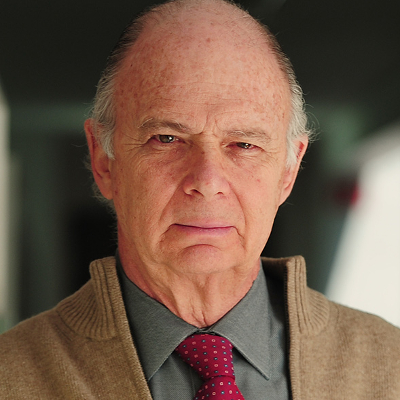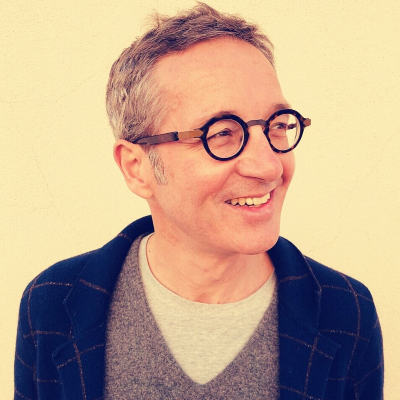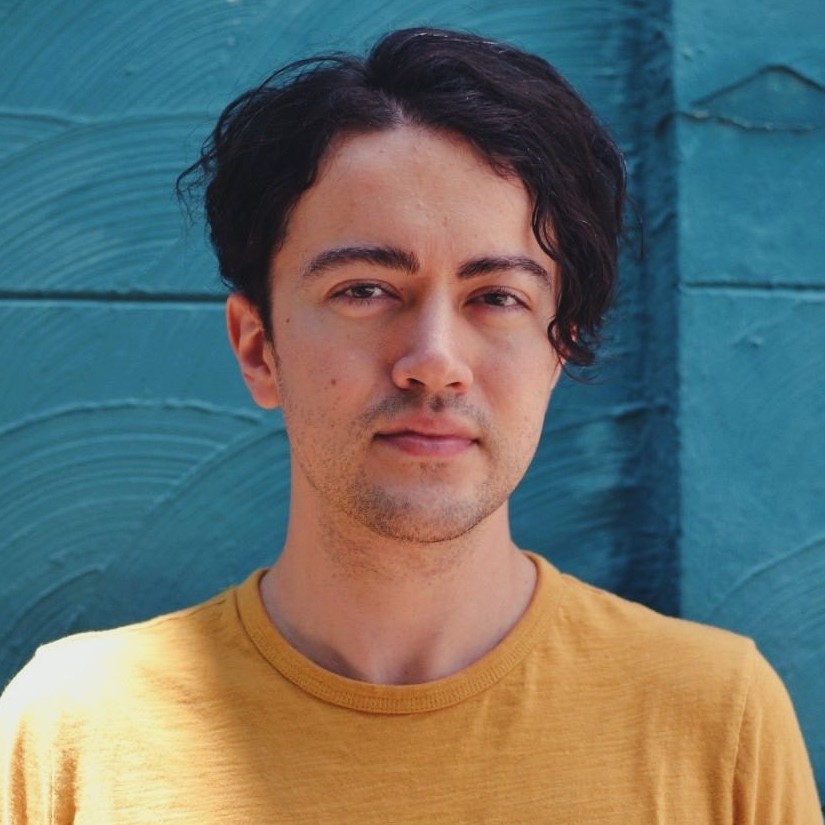Gabriel Zaid has been a creative writer, but also a critic. He has analyzed culture and the conditions of its production. He has observed politics and economics—power, the role of the state, the function of businesses, the pernicious endogamy of the academy—with perspicacity and independence, and has put forward an alternative plan of development.
José María Lassalle: I’ve read a lot of Zaid, each month in Letras Libres. He’s an essayist with universal reach. I’ve read Los demasiados libros, Cronología del progreso, El secreto de la fama—all remarkably original works. He discusses Condorcet just as easily as Aristotle. He interlaces economic, sociological, philosophical, and literary ideas with a fine thread: common sense. But none of that would have given me any idea of what you’re telling me. Gabriel Zaid is mysterious.
Enrique Krauze: How curious that you should use that adjective! One day, Daniel Cosío Villegas said to me: “Listen here, you’ve got to help me solve the mystery of Zaid.” He was clearly reading him and wanted to get to know him. And I managed to get Daniel to invite us over for a meal, and to get Gabriel—who’s the most reserved man in the world—to accept the invitation along with his wife, the painter Basia Batorska. It must have been in the autumn of 1974.
J.M.L.: How do you recall his intellectual profile at the time?
E.K.: I was still discovering that profile. In the sixties, he had published books of poems and one theory on creativity, not just in literature and art but in life: La poesía, fundamento de la ciudad, which he would later include in La poesía en la práctica. In 1971, I bought his anthology Ómnibus de poesía mexicana, which had come out around that time and which, as its name suggests, included an all-encompassing selection of Mexican poetry, from Nahuatl poetry—and, in fact, poems in many indigenous languages—to the twentieth century, from the avant-garde to romantic and popular songs. It’s required reading for one generation after the next, and it’s still being sold today. When I met him, he had just published Leer poesía, a lesson in poetry criticism: brief, precise, focused texts that get to the heart of the poem and reveal its formal elements: not just the what, but the how of the poem. Also from the early seventies is a book of his that would become an international bestseller: Los demasiados libros. Some time after, when I read Cómo leer en bicicleta: Problemas de la cultura y el poder en México, I was better able to assess the literary and cultural criticism he had published in the sixties. What most caught my attention was his independence. He didn’t bow to big, canonical names: he could praise Blanco, the poem by Octavio Paz, and just as naturally find Paz’s book Corriente alterna confusing. Thanks to the influence of C. Wright Mills, he told me, he applied the sociological imagination to the cultural system. Not only did literary works themselves become legitimate subjects: so did presses, bookstores, publishing procedures, readers. That’s how his criticism of power in culture began to appear: academic pedantry, low blows between writers, the profusion of useless prizes, chasing the limelight, superficiality, inane protest poetry, bad anthologies, false academic criticism, and other practices of the “literary scum,” a term from a letter Marx sent to Engels, which Zaid—a fine reader of both—reappropriated to describe Mexico’s literary atmosphere. All of this was remarkable, but very few readers appreciated his ludic adaptation of unusual genres: for example, turning astrology into literary criticism. A true feat of humor and irony. I can’t claim to have properly valued this essential aspect of his criticism. I have no doubt of its efficacy.
J.M.L.: Was there any politics in his work from that time?
E.K.: There was, and he wrote political criticism. He published a poem in opposition to Díaz Ordaz when he was still president. One text of his from 1969 is very important; it’s a critique of the book El intelectual y la sociedad, which was coordinated by Salvadoran poet Roque Dalton, in which a group of intellectuals declared that, out of love for the Cuban Revolution, they were able to stop being intellectuals. From the Castroist slogan, “Within the Revolution, everything; against the Revolution, nothing,” Zaid deduced—successively and logically, as if in a mathematical proof—that no intellectual could go against the truth, against historical meaning, against revolutionary power, against the Soviet Bloc, against the duty to obey. And, following these premises, indeed, it was better to stop being an intellectual. Those intellectuals proposed a sort of self-imposed Chinese Cultural Revolution. As Montaigne’s friend Étienne de La Boétie called it, “voluntary servitude.” This text, as he told me, irritated the Cubans to such an extent that they ordered one of their men in Mexico to write a rebuttal. Arnaldo Orfila Reynal, the publisher of Siglo XXI, found out about this and told Zaid he was willing to halt the response. Orfila was a major entrepreneur in the publishing industry, and he was a leftist, well known and recognized as such; he could have leveraged his authority and intervened. Zaid, of course, told him not to. He didn’t want to owe the Cubans any favors. The response came out (written by Federico Álvarez, an old-guard Spanish communist intellectual with close ties to Cuba), as did a letter by various authors in opposition to Zaid. “Thus was I excommunicated,” he told me one day, as naturally as you like, while recalling these events.
J.M.L.: If Orfila was an active leftist, how was he such a good friend of Zaid’s?
E.K.: As a business consultant, an author, and a friend of the press, Zaid was a key player in Siglo XXI. A man of honor like Orfila (who, in Argentina, had earned a living as a farmer) valued all that Zaid had to contribute: his books, his criticism, and his advice. The publishing world always interested Zaid a great deal. In 1955, he had written a thesis on the publishing industry. Orfila once told me, “I appreciate Gabriel enormously. He doesn’t play the leftist.” His friends at Siempre! magazine were always taken aback when he would tell them, quite simply, “I am not a revolutionary.” How was that possible? He didn’t believe in socialism, he was never enthused by the Cuban Revolution.
J.M.L.: He represented a different kind of intellectual.
E.K.: No doubt about it. Before I met him, I witnessed an episode that paints his full portrait. It was in the summer of 1971. Echeverría—remember?—had promised “those responsible” for the June 10 massacre would be punished. Two intellectuals came out in his defense. Carlos Fuentes said you had to choose between “Echeverría or fascism.” And the editor Fernando Benítez said not supporting the president was a “historic crime.” I was at Monsiváis’s house, and the phone rang. It was Zaid. Carlos, thoroughly embarrassed, told him, “I’m sorry, Gabriel, but we can’t publish the text you sent in. Pagés, the director, said no.” I heard Zaid guffaw down the phone. They hung up, and Monsiváis showed it to me. It simply said, “The only historic criminal is Luis Echeverría.” From that moment on, Zaid stopped contributing to the Siempre! supplement. That was the image I had of Zaid: a brave man. Then they published an issue in which they went after liberals. And, one month later, in September of 1972, Zaid published in Plural his famous “Carta a Carlos Fuentes.” Almost a year and a half had passed since June 10. And there was not a word of the investigation. Nonetheless, Fuentes (and, along with him, an ample group of writers and intellectuals) continued publicly defending Echeverría. Zaid argued that Fuentes was doing a disservice to what modest power writers had by placing his intellectual authority (his exclusive and limited power) at the service of the absolute power of the president. And, since Fuentes himself had suggested that his support was contingent upon the promised investigation, Zaid suggested he set a deadline for his patience. Whichever date he preferred. Fuentes refused. His support for that government was permanent. In 1975, he became Mexico’s ambassador to France. Zaid propounded and represented the opposite: not only a “brave” intellectual, but also a clear-headed, solid, original intellectual, with no ties to power. His attitude raised my own awareness. It validated the idea of the intellectual put forward and applied by Cosío Villegas: someone who works at the margins of the government, who thinks in a heterodox manner and criticizes unconditionally. Zaid was clearer and more defined in the face of power in Mexico than many revolutionaries. There were legitimate alternative paths to being an intellectual that were not the habitual, hegemonic paths of the left. One could be a critic and a detractor without being “a leftist.”
J.M.L.: Your conversations with Zaid and his independent attitude ended up resolving your own cognitive dissonance.
E.K.: In many respects. Back then there was a book by C.P. Snow, The Two Cultures, that demarcated and separated the humanities, on the one hand, and science and technology on the other. Zaid wrote a short essay, “Las dos inculturas,” in which he showed the profound inconsistency of going around separating fields of knowledge: a physicist can be greatly enriched by reading poetry, and a historian does better if he understands modes of production. The dissonance can, and must, be settled. And that has been clear ever since his book La poesía en la práctica. But my serious, even systematic reading of Zaid started with his texts in Plural magazine. I’ve often repeated that those texts not only convinced me—they converted me. I especially remember “El Estado proveedor,” the essay that gave rise to his monthly column “Cinta de Moebio” in said magazine. It’s from October of 1973. Going against the conventional opinion that the state (born of the revolution) was there to protect the poor, Zaid thought the persistence of poverty demonstrated the opposite: the terrible insufficiency of the state’s offerings to the poor. Leaving theoretical intentions or the state’s constitutional duties to one side, Zaid connected his experience as a business consultant to a vast, varied set of readings and analyses, auditing the Mexican state’s practical performance. And the verdict came out negative. That analysis resembled no other, because the conventional books published in the Mexican and U.S. academy studied the Mexican state along purely political lines, and some even considered it an exemplary case, a sort of miracle. His was, in essence, a critique of the state. Of its poor social performance and the high cost and miserably low productivity of its ministries, institutions, and public industries. It proved that state entities exist, first and foremost, for themselves.
J.M.L.: So the state builds more of the state, but not greater wellbeing? Saying that in the seventies was an attack “against the revolution.” Would you say he was a liberal critic of the “revolutionary” state?
E.K.: Yes, inasmuch as liberals mistrust the state as a matter of principle, but I associate that critique more so with a stance of social responsibility and genuine concern for the poor and the campesinos that comes from Catholic culture, and particularly from the encyclical Populorum Progressio. The state built itself based on the lie that it was helping the poor. Zaid carried out an audit of this lie. A double-edged audit: of the ideology of the conception of the state in general, and of the Mexican case in particular. And, even more remarkably, he offered ways out. You remember Popper’s formula, “piecemeal social engineering”? Zaid is something like Popper applied to Mexico. A social engineer. Several of his monthly articles proposed just that: a “piecemeal social engineering” for Mexico. In Posdata, Paz had brought up the need for an alternative model of development, but he had no concrete ideas, and in Plural he suggested a return to Fourier. Zaid picked up where he left off, not appealing to the ideas of so-called “utopian socialism” but rather creating a model all his own. A non-socialist model for a traditional Mexico. A model of productive progress and human development within the market, exportable to other backward countries. Zaid neither denied the market nor demonized business. His texts encouraged Mexico’s economic opening to the outside world at a time when no one was proposing this strategy.
J.M.L.: Why did you find this “piecemeal social engineering” so interesting?
E.K.: Because it changed my perspective, allowing me to see social matters through different eyes. Because it was an alternative to socialism. Simple as that. Not a blind economic liberalism (with which I’ve never agreed), but a social engineering that does not see the poor as if they were children, nor the campesinos as if they were proletarians, but rather sees both as people who are perfectly capable of knowing what they need and how to build it where they live: cooperative finance, local negotiation, community investment, effective and inexpensive technology. They don’t need help, they need freedom; to be freed from restrictions and paternalism, here and now, not in the realm of utopia or through the unchecked growth of a bureaucratic state. Faced with the statist, corporative, pyramidal, and centralist model of development, Zaid proposed a slimming-down and a productive rationalization of state machinery—but, of course, not the abolition of the state itself. Above all, he put forward practical ideas within the market economy to favor the autonomy of the rural poor without forcing them to leave their towns, without giving them no choice but to become nomads in the cities, or migrants. I’ll give you an example he has cited himself: the work of a Spanish priest whom nobody in Spain remembers. I’m talking about Vasco de Quiroga, who came to Mexico after reading Thomas More’s Utopia. In 1540, in the villages of Michoacán, he undertook the world’s most fully-realized experiment in utopia, much more successful than those promoted by the so-called “utopian socialists,” by Owen or Fourier, in nineteenth-century Europe. The strict division of labor he established in the so-called “pueblos hospitales” of the Tarascan Plateau lasted until recent times. Every village had a speciality: blankets, furniture, lacquered wood. I visited the indigenous town of Cherán in 1968, and I admired their textiles and embroidered aprons. When the great writer Sybille Bedford passed through there in the forties, she had almost an epiphany about the meaning of life: the inhabitants of that plateau were not wealthy, but they lived in almost idyllic harmony with their surroundings. Now the whole region lives on the edge due to the organized crime that’s ravaging the state of Michoacán, but that community spirit lives on—for example, in the school of luthiers, guitar-makers, and artesans of musical instruments of Paracho, which is highly recognized around the world. So, as you can see, the model he proposed has deep roots. Thomas More’s utopia only became reality in one place: Mexico’s Tarascan Plateau.
J.M.L.: Are you claiming that’s the reality, or are you drawing an analogy? More was speaking of an imaginary, impossible place, and what you’re telling me now seems very optimistic…
E.K.: Zaid maintained that we have to stop seeing rural people and those from villages as the protagonists of a previous phase that has since passed, surmounted by progress in cities and industries. We have to recognize small communities for their integral value (as a way of life, a culture, an ecology, a tradition, not only as a “surmountable” form of production) and support them such that they don’t chase after the mirage of the cities. Zaid’s constructive anarchism—that’s what it was—had better ideas for rural Mexico than university socialism. For example, designing a relevant and affordable offering of means of production that might reach rural communities and marginalized areas. Wells and pumps that don’t require electricity, redesigned bicycles, clothes manufacturing. He gave dozens of examples. In his office, he even kept an entire library of books and pamphlets on these inventions, encyclopedias of intermediate technology. He states as a caveat that he is offering market solutions, not state solutions. You know the perfect example? Sewing machines. Lenin didn’t invent them, by the way; that was Mr. Singer, who sold hundreds of thousands of them in the rural Mexico of the forties. I read this statistic in an essay by Tannenbaum from 1944, and when Zaid found out, he praised it. Another idea Zaid developed in Plural was the distribution of five percent of Mexico’s gross domestic product, in cash, among all Mexican citizens. The universal nature of this distribution would make it immune to corruption or political manipulation. Once this prerequisite is met, his central thesis is as follows: if each and every Mexican received an equal amount of money (a few thousand pesos per year), simply by virtue of being Mexican, then the social positioning of middle- and upper-class families would not change. But, for a poor family, this income (multiplied by the four members who make up the family, let’s say) would make all the difference. He also developed the idea of “créditos a la palabra,” or credit on trust. Zaid was confident that poor people would pay these loans back, because they were lower than usurious loans and because the capital productivity of a poor family is vastly superior to that of a well-off family or a big business. He even devised a theorem that was proven by Dr. José Adem, the world-renowned mathematician. Over time, these ideas would become very successful, not only in Mexico but all over the world. Zaid anticipated the concept of Grameen Bank in Bangladesh, for which Muhammad Yunus won the Nobel Prize. Zaid was living proof of how “piecemeal social engineering” is more humane than holistic, utopian, messianic visions of mankind and history. In short, his social concern does not translate to lamentations, discourses, tedious theories, or condemnations, but rather to proposals. In 1979, he brought together his essays published in Plural and Vuelta in his book El progreso improductivo.
J.M.L.: I’m quite surprised by what you’ve told me about Zaid. While being a universal literary essayist, he’s also a Popperian social engineer, ahead of his time, and the creator of an alternative plan of development.
E.K.: Daniel Cosío Villegas didn’t want to meet him for nothing. And, while reading about these subjects, you brought the old historian together with the engineer poet. Both were authors at Plural. Daniel was seventy-six years old and Zaid was forty. The day of that meal, when he saw Zaid, Daniel said to him, “I thought you would be fat; one gets these ideas.” And they started talking about those physiognomic theories, going from there to more serious matters I no longer recall. Zaid wrote a text about El estilo personal de gobernar in which he praised his healthy, liberating impertinence and his liberalism, not in the least bit anachronistic and very up-to-date. Why is it that Daniel imagined Zaid that way? Perhaps because Zaid has always avoided any kind of spotlight: there are no photographs of him and he doesn’t give interviews. I myself don’t know much about his life. His biography is made up of his books.




